Monasheikh
Rough_Rock
- Joined
- Dec 19, 2017
- Messages
- 5
Thanks a lot for your insight foxinsox. Will ask team to mov.It could be, bit hard to tell just off pictures tho. You're more likely to get replies from the coloured stones experts if you get this thread moved to the Coloured Stones forum. Click on the bottom of your post and use the report concern option to ask the moderators to move it to that forum. There's also a sticky post in Coloured Stones about how to tell if your alexandrite is real or not so that may be helpful.
This is only my personal opinion...
Think it is not russian - these kind of inclusions ( the long cloud in the third pic from the center to 7-8 o'clock) - very very fine parallel tubes
I have seen ( and in some stones in my collection) in stones from India and Sri Lanka and Tanzania. Size, color and overall clarity could be India too. Think not Hematita / Brazil...
An alexandrite ( synthetic or natural) I would say yes.
Photoshopped mmmh - don't think so...
Def. you need a lab like AGL for this stone - it is large and not bad ( the stone)
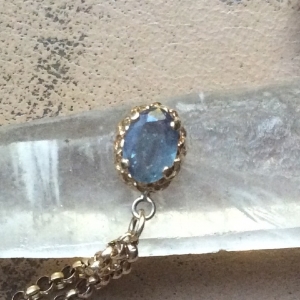
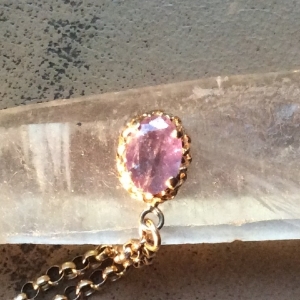
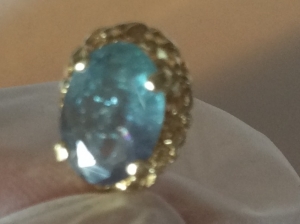
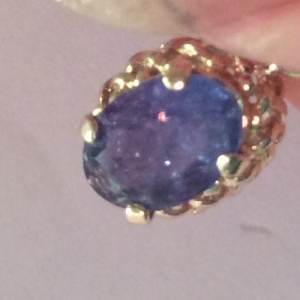 It’s a nice ring. The Alex looks great in the daylight photo, but seems to be showing a weak and uneven colour change in the incandescent photo. I’d be asking for more incandescent photos. You want to more fully changing to purple / red. Has it got certification from GIA? You really need certification, there are some very impressive synthetic gems about these days and you don’t want to pay “natural” price for a synthetic. Mine (as per photos) is tiny and included but these iPhone pics give you an idea of what colours should occur. Mine has strong and almost full colour change.
It’s a nice ring. The Alex looks great in the daylight photo, but seems to be showing a weak and uneven colour change in the incandescent photo. I’d be asking for more incandescent photos. You want to more fully changing to purple / red. Has it got certification from GIA? You really need certification, there are some very impressive synthetic gems about these days and you don’t want to pay “natural” price for a synthetic. Mine (as per photos) is tiny and included but these iPhone pics give you an idea of what colours should occur. Mine has strong and almost full colour change.I also felt same, quite silky and very clean. Video has good color change. So you are indicating this may be synth, Because its silky?I am not going to ID origin by the few pictures but wanted to point out that this particular stone is quite silky.
Do you have Dr. Karl Schmetzers book "Russian Alexandrite"?
I visit european show - most Germany and France - an there are some eastern european vendors who sometimes offer russian alexandrite from Malysheva Mine - an emerald producing mine with occasional alexandrite.
Around 1990 we had some russian gem dealers with a larger amount of alexandrite ( and demantoid ) - scientists who sold over the years collected material. Most stones had a poor to medium quality. Light grayish bluishgreen to grayish pink CC - darker and clean stones I have never seen except some small melee stones.
Today I have a vendor with good connections to Russia and bought demantoid and alexandrite from him.
If you want more "infos" contact me at the other forum which is online.
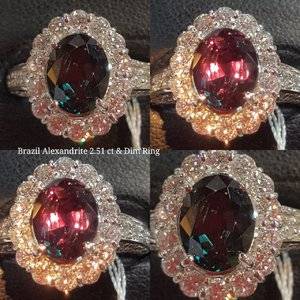
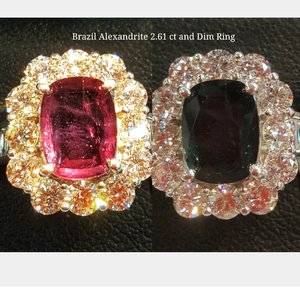
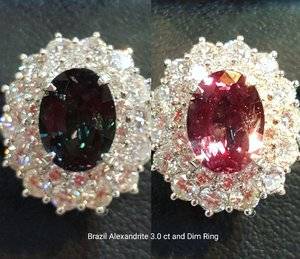
I always revert back to my default response when someone brings up the "russian" in alexandrite.
It's like this....David Weinberg, who wrote the "book" on Alexandrite [http://www.alexandrite.net/], as well as lives in the gem center of the world, Thailand, personally told me that he hasn't seen a Russian alexandrite in over 15 years.
If David, who is part owner of Multicoulor, hasn't had one, or seen one, in over 17 years.
If he hasn't seen one, then does anyone really think they would happen onto a russian stone themselves?
"The mining of alexandrite in Russia lasted less than 100 years from the time it was discovered in 1833 to the early 1900’s. It was George Kunz, the gemologist/gemstone buyer for Tiffany & Co that probably did the most to popularize this unique gemstone. Kunz was the supreme marketer of gems and minerals of his day. He was so captivated by alexandrite that he traveled all the way to Russia in search of it. As a result of his travels, almost half of the all the early Russian alexandrite jewelry was said to have been made by Tiffany & Co. The pieces are dated in the 19th century and feature alexandrites as center stones. They are considered to be collector items and are occasionally available at some of the high end jewelry auctions.
From a historical perspective, it is clear that Russian alexandrites are the most valuable of all the alexandrites if their origin can indeed be proved. In terms of quality however, Brazilian alexandrites may be better. With better clarity and a strong color change from rich blue green to strong purple red, the beautiful color change of the Brazilian alexandrites is highly prized and the stones are always in strong demand.
Experts in late 19th century antique jewelry acknowledge strong color resemblances between Brazilian and Russian alexandrites but the Russian stones are said to be slightly darker and less clean than their Brazilian cousins. There are many gemologists that can distinguish between natural and synthetic alexandrites but few have ever had the opportunity to study any Russian stones. Gemological data about Russian alexandrites is limited and few labs are experienced enough to actually confirm the Russian provenance of a stone.
With so few Russian alexandrites available anywhere, their quality is nearly impossible to compare with alexandrites from later discoveries. Some fine alexandrites have been found at every important alexandrite deposit and the qualities of the best stones, as evidenced by the high prices they have fetched must surely rival even the very best Russian stones."
